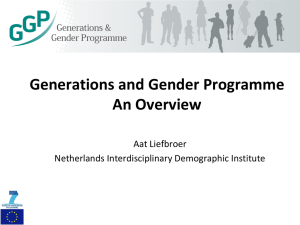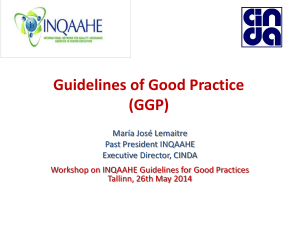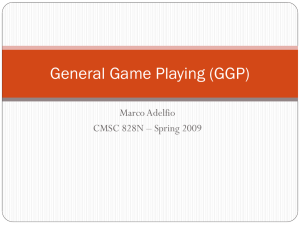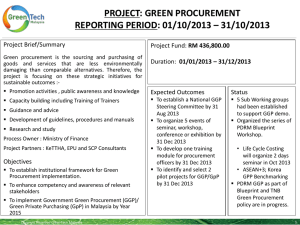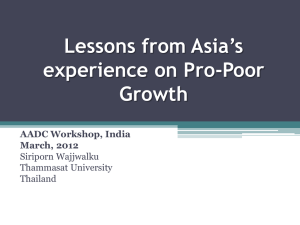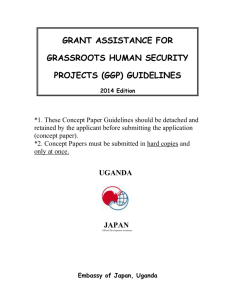Demos, bulletin on population and society, Volume 32, Issue 7, July
advertisement
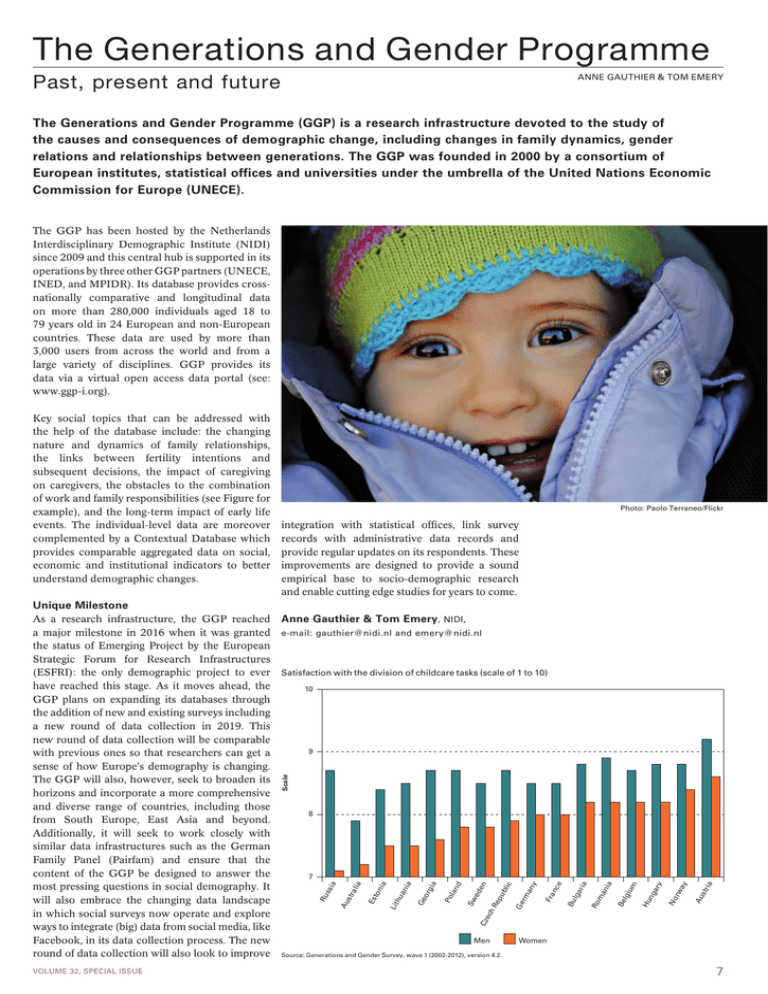
The Generations and Gender Programme Past, present and future Anne Gauthier & Tom Emery The Generations and Gender Programme (GGP) is a research infrastructure devoted to the study of the causes and consequences of demographic change, including changes in family dynamics, gender relations and relationships between generations. The GGP was founded in 2000 by a consortium of European institutes, statistical offices and universities under the umbrella of the United Nations Economic Commission for Europe (UNECE). The GGP has been hosted by the Netherlands Interdisciplinary Demographic Institute (NIDI) since 2009 and this central hub is supported in its operations by three other GGP partners (UNECE, INED, and MPIDR). Its database provides crossnationally comparative and longitudinal data on more than 280,000 individuals aged 18 to 79 years old in 24 European and non-European countries. These data are used by more than 3,000 users from across the world and from a large variety of disciplines. GGP provides its data via a virtual open access data portal (see: www.ggp-i.org). Key social topics that can be addressed with the help of the database include: the changing nature and dynamics of family relationships, the links between fertility intentions and subsequent decisions, the impact of caregiving on caregivers, the obstacles to the combination of work and family responsibilities (see Figure for example), and the long-term impact of early life events. The individual-level data are moreover complemented by a Contextual Database which provides comparable aggregated data on social, economic and institutional indicators to better understand demographic changes. Photo: Paolo Terraneo/Flickr integration with statistical offices, link survey records with administrative data records and provide regular updates on its respondents. These improvements are designed to provide a sound empirical base to socio-demographic research and enable cutting edge studies for years to come. VOLUME 32, SPECIAL ISSUE ia str Au rw ay No um ng ary Hu ia ria ce an lgi Be Ro m lga Bu Fra n an y lic ub rm Ge Cz ec hR ep nd ia Sw ed en Po la ia an org Ge ia lia ton hu Lit Es tra Au s Ru s sia Scale Unique Milestone As a research infrastructure, the GGP reached Anne Gauthier & Tom Emery, NIDI, a major milestone in 2016 when it was granted e-mail: gauthier@nidi.nl and emery@nidi.nl the status of Emerging Project by the European Strategic Forum for Research Infrastructures (ESFRI): the only demographic project to ever Satisfaction with the division of childcare tasks (scale of 1 to 10) have reached this stage. As it moves ahead, the 10 GGP plans on expanding its databases through the addition of new and existing surveys including a new round of data collection in 2019. This new round of data collection will be comparable 9 with previous ones so that researchers can get a sense of how Europe’s demography is changing. The GGP will also, however, seek to broaden its horizons and incorporate a more comprehensive and diverse range of countries, including those 8 from South Europe, East Asia and beyond. Additionally, it will seek to work closely with similar data infrastructures such as the German Family Panel (Pairfam) and ensure that the content of the GGP be designed to answer the 7 most pressing questions in social demography. It will also embrace the changing data landscape in which social surveys now operate and explore ways to integrate (big) data from social media, like Men Women Facebook, in its data collection process. The new round of data collection will also look to improve Source: Generations and Gender Survey, wave 1 (2002-2012), version 4.2. 7

